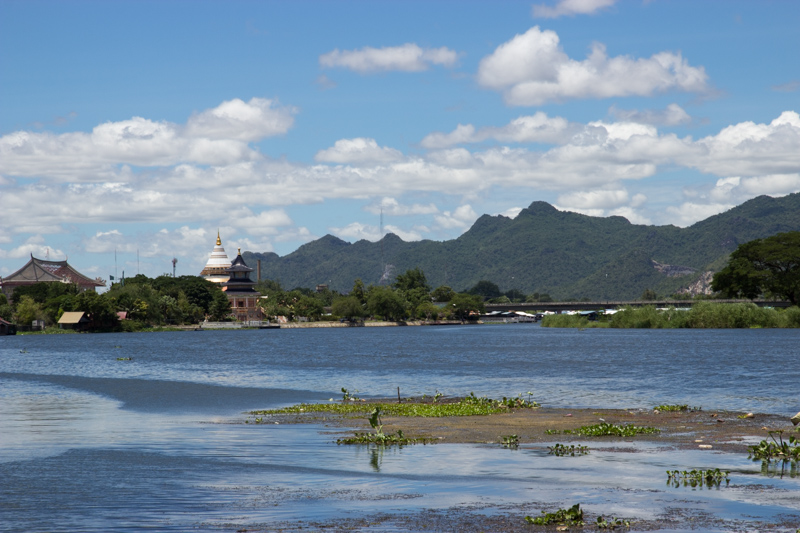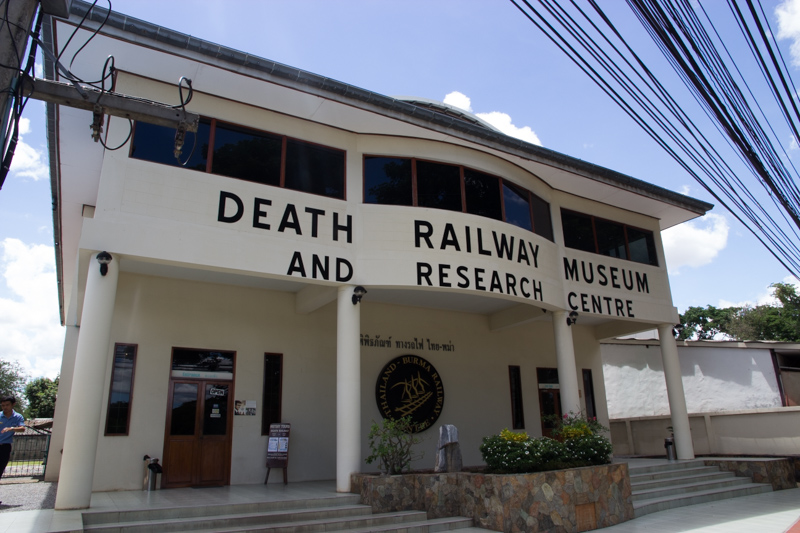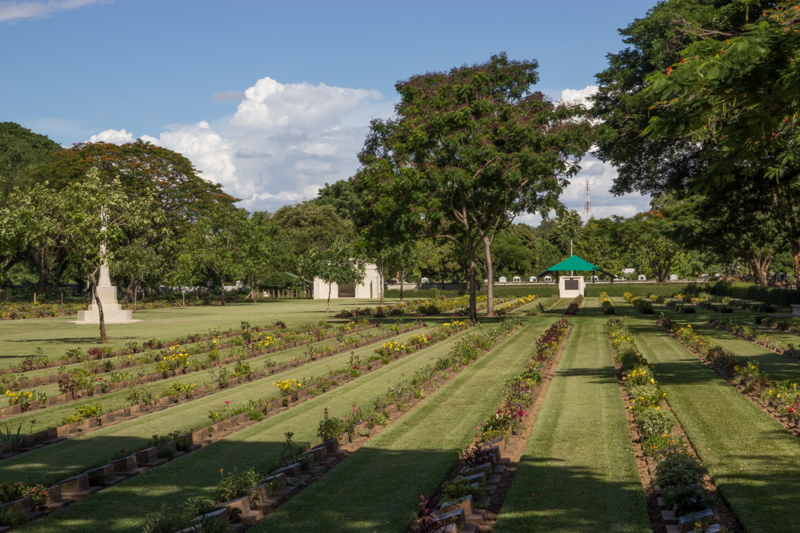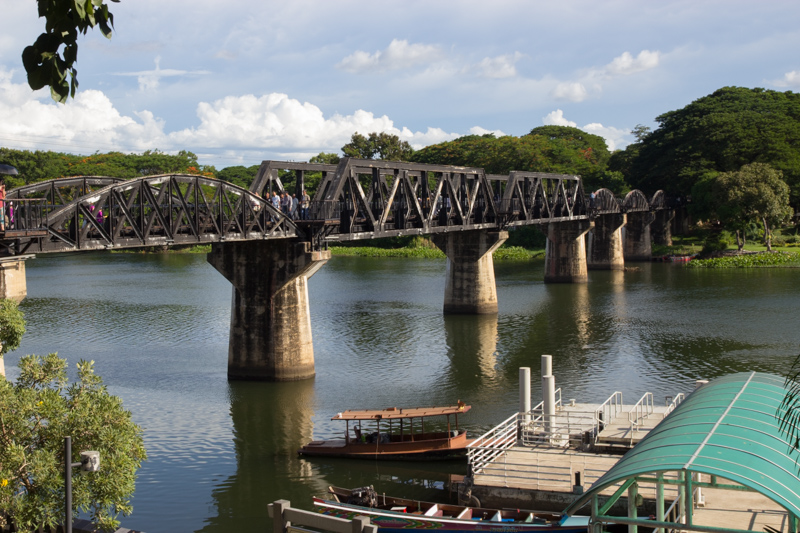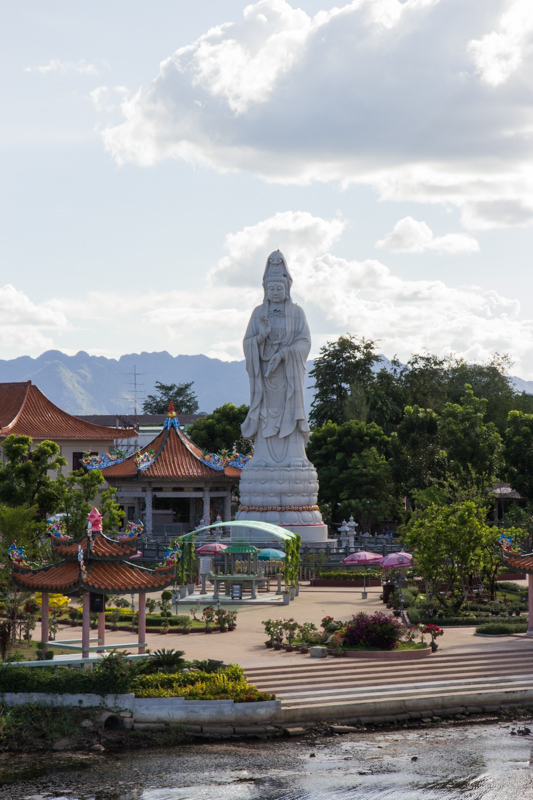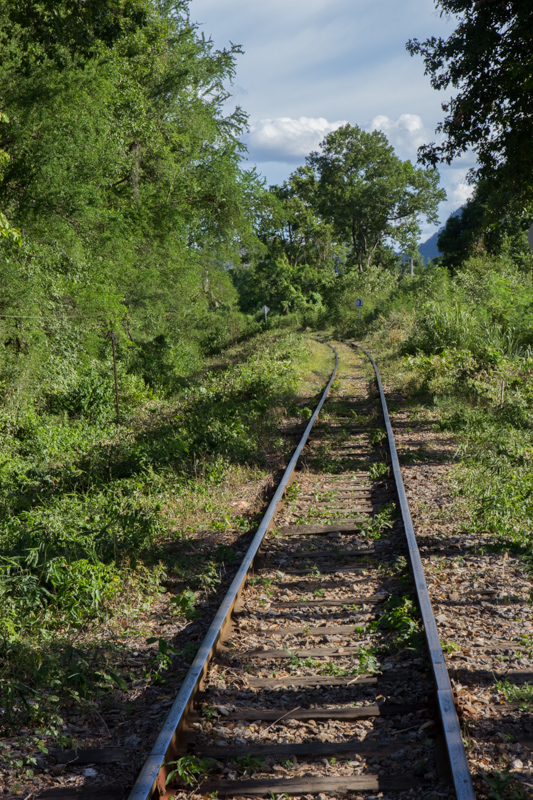Kanchanaburi. To most people this place name won’t mean anything. It’s a little town three hours west of Bangkok and the Mae Khlong river runs through it. Still not sure? The Mae Khlong was renamed the Khwae Yai river – home to the bridge over the river Kwai.
Our journey began when we boarded the train in Bangkok. It was a typical stiflingly hot day and the train crawled from station to station. As soon as the train reached the city limits it sped up, the skyscrapers turned to endless rice paddys populated by water buffalo and we clickety-clacked past scenes of rural life in Thailand.
I was enjoying the cool breeze and open country when the train pulled up at Nong Pla Duk station. There I saw a wooden signboard near the platform. It stated simply that this station marked the beginning of the Thai-Burma railway otherwise known as the Death railway. From here on we would be riding the railway built by prisoners of war during World War Two.
Arriving in Kanchanaburi, I didn’t know what to expect. I had read POW memoirs that painted a vivid picture of dense jungle, unbearable humidity, mosquitoes, snakes, scorpions and many other creatures. What I found was a pretty little town with winding back streets, cafes and a bustling night life.
In the centre of town, the river Kwai was hidden from view by the shops and guesthouses. Hugh and I were fortunate enough to stay on a river raft. From there we had an unspoilt view down river of the Thai countryside and a fabulous wat.
The next day we set out early and visited the railway museum. Walking under a section of the original bridge, I entered the inner exhibition rooms. Displayed on two floors were stories, pictures and artifacts from the death railway period.
Two hours later and my vague notions of this area had been cemented into understanding of how the railway had been built and how the POWs were treated. With every new story I read or picture I saw, the railway seemed like a feat of human endurance. Many of the prisoners looked like walking skeletons and had diseases such as cholera yet they carried on until the end.
Stories I had read prior to visiting the museum told of how the prisoners had been transported in metal cargo containers on the railways. This is something that can’t be comprehended until you’ve experienced the heat of Asia and then stood inside a reconstructed container.
Despite the stories of hardship, the exhibitions displayed artifacts that displayed ingenuity and a desire to survive in spite of the horrific circumstances. Prisoners fashioned radios to get snippets of news that would bring hope; diaries were kept even with the knowledge that discovery by the captors would mean instant death; wood and bamboo were used by prisoners to make game boards such as chess or backgammon.
At the end of the exhibition was a cafe and we were gratefully provided with a free cup of tea. Hugh and I sat at the window which overlooked the war cemetery, reflecting on the museum and the stories we had read. Soon after, we made the five kilometre walk from the town centre to the bridge and Kwae Yai river.
Seeing the bridge for then first time was breathtaking. I had read so much about it and seen so many pictures of this iconic structure. On one bank there were souvenir stalls and refreshment stands; on the river itself were floating restaurants.
The opposite bank was home to a temple with an oversized statue of a deity that reached above the tree line and towered over the river. It then became clear that the heat was the only similarity between the current day and when the bridge was built.
I felt this area was almost touristy to the point of ruin until I stepped on to the bridge. Then I remembered how it had been built. Walking across the bridge filled me with a sense of gravity and the further away I got from the tourist attractions, the more I could appreciate what the bridge stood for. I walked to the end and stared off down the line. The dark history contrasted with the sunlit tracks, which curved away from me and into the jungle. I knew this place had more of its story to tell but for now it was time to part ways. I turned around and headed back to the crowds of Kanchanaburi.
